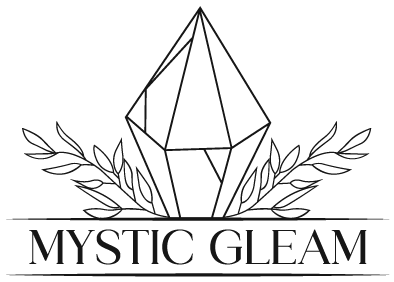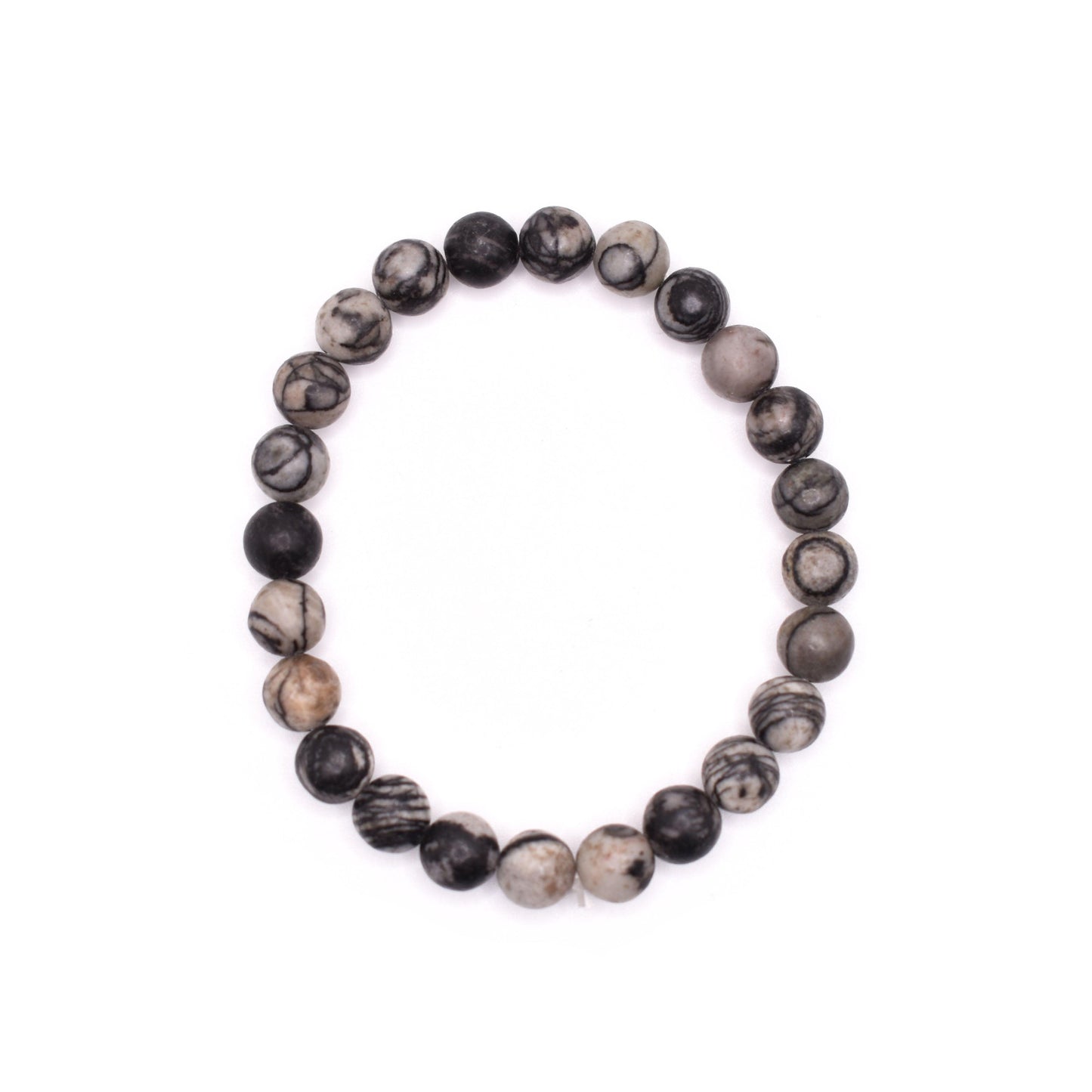
Jasper Genesis: A Million-Year Journey from Rock to Gem
Share
The Journey of How Jasper is Formed
| Key Points | Details |
| Formation Process | Silicification over millions of years |
| Main Component | Microcrystalline quartz (chalcedony) |
| Key Factors | Silica-rich fluids, porous materials, time, pressure |
| Color Source | Mineral impurities during formation |
| Notable Varieties | Red Jasper, Ocean Jasper, Mookaite, Picasso Jasper |
| Major Locations | Global (specific varieties in unique locations) |
Hey there, rock enthusiasts and curious minds! Ever picked up a piece of jasper and wondered, "How is jasper formed?" Well, you're in for a treat because we're about to dive deep into the captivating world of this stunning gemstone. Buckle up as we explore the geological processes that create jasper and discover where jasper comes from.
The Birth of Jasper: A Geological Marvel
So, how is jasper formed? It's a tale as old as time itself - well, geological time, that is. Jasper is a type of chalcedony, which is a microcrystalline variety of quartz. It forms over millions of years through a process called silicification. Basically, it's nature's way of turning ordinary sediments or volcanic ash into something extraordinary.
The process begins when silica-rich fluids seep into porous rocks or sediments. Over time, these fluids deposit tiny quartz crystals, filling in the spaces and eventually replacing the original material. The result? A dense, opaque stone that we know and love as jasper.
But here's where it gets really interesting. How jasper is formed can vary depending on the environment and the minerals present during its creation. This is why we have so many fascinating varieties of jasper, each with its own unique patterns and colors.
Where Does Jasper Come From?

Now that we know how jasper is formed, let's take a world tour to discover where jasper comes from. Spoiler alert: it's found all over the globe!
- Where does red jasper come from? Red jasper is found in various locations worldwide, including the United States, Russia, and India. Its vibrant red color comes from high iron oxide content.
- Where does ocean jasper come from? Ocean jasper has a fascinating origin story. It's found exclusively on the northwestern coast of Madagascar. In fact, how ocean jasper is formed is quite unique - it's believed to be the result of rhyolitic lava flows interacting with seawater.
- Where does bumble bee jasper come from? Despite its name, bumble bee jasper isn't actually true jasper. It comes from Indonesia and is formed through volcanic activity.
- Where does fancy jasper come from? Fancy jasper, known for its colorful patterns, is primarily found in India and Madagascar.
- Where does kiwi jasper come from? Kiwi jasper, with its distinctive green color, hails from Australia.
- Where does mookaite come from? Mookaite, a type of jasper, comes exclusively from Mooka Creek in Western Australia.
- Where does Picasso jasper come from? Picasso jasper, named for its artistic patterns, is primarily mined in Mexico.
- Where does polychrome jasper come from? Polychrome jasper, also known as Desert jasper, is found in Madagascar and the southwestern United States.
- Where does Red Creek jasper come from? Red Creek jasper is mined in China and is known for its striking red and yellow patterns.
The Jasper Formation Process: A Closer Look
How Jasper is Formed: A Step-by-Step Guide
Step 1: Silica Infiltration
Silica-rich fluids seep into porous materials like volcanic ash or sedimentary rocks.
- Source: Groundwater or hydrothermal fluids
- Temperature: Varies, typically 50-300°C
- Duration: Can begin over thousands of years
Step 2: Crystallization
Tiny quartz crystals form over time, filling in spaces and replacing original material.
- Process: Slow precipitation of silica
- Crystal size: Microcrystalline (very tiny)
- Duration: Millions of years
Step 3: Color Development
Mineral impurities create unique colors and patterns in the forming jasper.
- Red: Iron oxide (hematite)
- Yellow: Limonite
- Green: Chlorite
- Brown: Manganese oxides
Step 4: Jasper Formation Complete
After millions of years, fully-formed jasper is created.
- Hardness: 6.5-7 on the Mohs scale
- Composition: 80-90% silica
- Structure: Microcrystalline quartz
Did You Know?
The word "jasper" comes from the Greek word "iaspis," meaning "spotted stone."
Common Jasper Varieties
- Red Jasper
- Ocean Jasper
- Picture Jasper
- Mookaite
- Brecciated Jasper
- Silica-rich environment: The formation of jasper needs an abundance of silica, which can come from volcanic ash, weathered rocks, or hydrothermal fluids.
- Porous material: The silica needs somewhere to go. This could be sedimentary rocks, volcanic ash, or even organic material.
- Time and pressure: Like all good things in geology, jasper formation requires patience. It takes millions of years of heat and pressure to transform the original material into jasper.
- Mineral impurities: The diverse colors and patterns in jasper come from various mineral impurities. For example, how red jasper is formed involves a high iron oxide content, giving it that distinctive red hue.
The Unique Formation of Specialty Jaspers
Some jaspers have particularly interesting formation stories. Let's look at a few:
- How is ocean jasper formed? Ocean jasper forms when rhyolitic lava flows interact with seawater. This unique process creates the orbital patterns that ocean jasper is famous for.
- Mookaite formation: Where does mookaite come from? This Australian jasper forms from the skeletal remains of radiolaria, tiny marine organisms. It's found only in the Mooka Creek area of Western Australia.
- Bumble Bee Jasper: Where does bumble bee jasper come from? This striking stone forms near active volcanoes in Indonesia. It's actually a combination of volcanic matter, sulfur, and other minerals.
The Human Connection: Why We Love Jasper
Understanding how jasper is formed and where jasper comes from only enhances our appreciation for this beautiful stone. Humans have been drawn to jasper for thousands of years, using it for tools, jewelry, and spiritual practices.
Each piece of jasper tells a story of the Earth's history, locked in its colorful patterns and swirls. Whether it's the earthy tones of Red Creek jasper or the cosmic swirls of ocean jasper, each variety offers a unique glimpse into the geological processes that shaped our planet.
Jasper in the Modern World
Today, jasper continues to captivate us. It's used in jewelry, decorative objects, and even in holistic practices. Knowing where jasper stone comes from and how jasper is formed adds an extra layer of appreciation when we hold a piece in our hands.
For rock hounds and geology enthusiasts, the quest to understand where does jasper come from can lead to exciting adventures. Whether you're combing the beaches of Madagascar for ocean jasper or exploring the Australian Outback for mookaite, the search for jasper can be as thrilling as the stones themselves.
Conclusion
As we wrap up our journey into how jasper is formed, remember that this process is ongoing. Right now, somewhere deep beneath the Earth's surface, new jasper is slowly taking shape. It's a reminder of the dynamic, ever-changing nature of our planet.
So the next time you hold a piece of jasper, whether it's fancy jasper from India or Picasso jasper from Mexico, take a moment to appreciate its journey. From molten lava to sea floors, from volcanic ash to deep underground, jasper has seen it all. And now, it's in your hands - a little piece of Earth's history, millions of years in the making.
Remember, every jasper has a story. Where does jasper come from? From the heart of the Earth, shaped by time, pressure, and the perfect mix of minerals. It's not just a stone; it's a geological time capsule, waiting for us to unlock its secrets.






